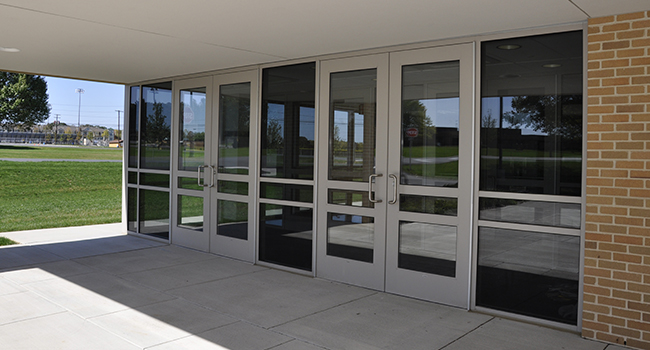
West Virginia County Controls Access to Campuses for Safety
Campuses in Cabell County, West Virginia, have bolstered their safety methods to secure school entrances
- By Jessica Davis
- March 13, 2019
Campuses in Cabell County, West Virginia, have added layers of security to bolster safety for students and staff on campus. There is a particular focus on closing campuses, controlling who can enter and when, in order to protect those at school.
"Like how Sept. 11 changed airport security, Columbine changed school security," said Keith Thomas, principal of Central City Elementary School in Huntington.
Cabell County schools have multiple physical and human checks to screen visitors before they can enter the hallways or gain access to students.
Every school in the county has one main entrance (or two, at the high schools) that serves as the only point where visitors can enter the campus. All doors that open to the outside of the campus are locked from the inside at all times.
Main entrances feature “a-phones,” which are essentially a doorbell intercom that connects to the school’s office. The phones include cameras that allow office staff to see the visitor ringing the doorbell, and all visitors are required to ring the office and state their business before being allowed into the office.
School employees are issued their own key card along with their county identification badge. The cards can be programmed to only allowed employee access during certain hours or at certain places. For example, staff at Central City Elementary School can only use their cards to enter that campus, and only during specific hours.
The main entrance at most campuses features a “man-trap,” a double-doored, single-point entry that can be remotely locked. The design helps funnel visitors to the main office after they ring the a-phone. Once the visitor enters the office, the door leading to the main hallway of the school stays locked until the visitor is cleared by staff.
About 12 of the county’s schools do not feature man-trap entrances, though the district plans to add them to all of its schools, according to Superintendent of Operations Kim Cooper. In the meantime, the Cabell County Board of Education unanimously approved posting security guards through at least the 2018-2018 school year at campuses that lacked the man-trap building.
Cooper said the human impact in screening visitors is, in its way, just as helpful as physically securing the building.
"You can have a multimillion-dollar security system, but you can take a rock as big as your thumbnail and keep a door open, and that voids the whole thing," Cooper said.
About the Author
Jessica Davis is the Associate Content Editor for 1105 Media.